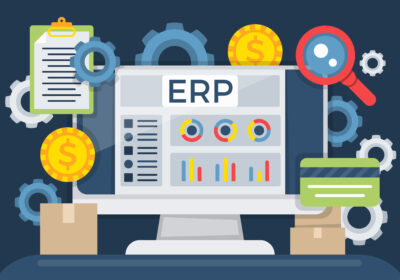Organizations rely on robust software solutions to streamline operations, enhance productivity, and maintain a competitive edge. Enterprise Application Development (EAD) is the process of designing, building, and deploying custom software solutions tailored to meet the unique needs of businesses. These applications are integral to managing various functions such as resource planning, customer relationship management (CRM), supply chain management, and more.
Understanding Enterprise Applications
Enterprise applications are large-scale software systems designed to support complex organizational processes and data flows. Unlike consumer-focused applications, enterprise applications prioritize scalability, integration, and security to serve multiple users across different departments and locations.
Key characteristics of enterprise applications include:
- Scalability: They are designed to handle a growing number of users and data without compromising performance.
- Integration: Enterprise applications seamlessly connect with existing systems and third-party tools to ensure smooth operations.
- Customization: They are tailored to address the specific workflows and requirements of the business.
- Security: Given the sensitive nature of enterprise data, robust security measures are a cornerstone of these applications.
The Enterprise Application Development Process
1. Requirement Analysis
Understanding the business’s goals, challenges, and workflows is the first step. This involves close collaboration with stakeholders to gather detailed requirements.
2. Planning and Design
Once the requirements are clear, developers create a blueprint for the application. This includes designing the user interface (UI), defining system architecture, and mapping out integration points.
3. Development
Using programming languages and frameworks best suited to the project, developers build the application. Agile methodologies are often employed to ensure flexibility and iterative progress.
4. Testing
Comprehensive testing—including functional, performance, and security testing—ensures the application meets quality standards and operates as intended.
5. Deployment
After rigorous testing, the application is deployed in the organization’s IT environment, often followed by user training and onboarding.
6. Maintenance and Upgrades
Post-deployment, continuous monitoring, maintenance, and updates are necessary to ensure the application remains relevant and efficient.
Benefits of Enterprise Application Development
1. Enhanced Productivity
Custom enterprise applications streamline workflows, automate repetitive tasks, and reduce manual errors, allowing teams to focus on strategic initiatives.
2. Improved Decision-Making
By centralizing data and providing real-time insights, these applications empower businesses to make informed decisions quickly.
3. Better Collaboration
Enterprise applications foster seamless communication and collaboration among departments by breaking down data silos.
4. Competitive Advantage
Tailored applications provide businesses with unique capabilities that set them apart from competitors.
Challenges in Enterprise Application Development
1. Complexity of Requirements
Balancing diverse departmental needs while ensuring alignment with organizational goals can be challenging.
2. Integration Issues
Connecting new applications with legacy systems and third-party tools often requires significant effort and expertise.
3. Security Concerns
As enterprise applications handle sensitive data, ensuring robust security is both critical and challenging.
4. Cost and Time
Developing custom applications demands substantial investment in terms of time, money, and resources.
Technologies Driving Enterprise Application Development
- Cloud Computing: Enables scalable and cost-effective solutions with easy access to data and applications.
- Artificial Intelligence and Machine Learning: Enhances automation, personalization, and decision-making capabilities.
- DevOps: Streamlines development and deployment processes for faster time-to-market.
- Microservices Architecture: Promotes modular, flexible, and easily maintainable applications.
- APIs: Facilitates seamless integration with other software and systems.
Why Enterprise Application Development Matters
In a world where businesses must adapt quickly to changing market dynamics, enterprise applications play a pivotal role in driving efficiency and innovation. By automating processes, enabling better data management, and fostering collaboration, these applications empower organizations to achieve their strategic goals.
Conclusion
Enterprise Application Development is more than just creating software; it’s about delivering solutions that address unique business challenges and drive long-term growth. Whether it’s enhancing productivity, improving decision-making, or gaining a competitive edge, the impact of a well-designed enterprise application cannot be overstated.
At Verbat, we specialize in building custom enterprise applications tailored to your business needs. Contact us today to learn how we can help you transform your operations with cutting-edge software solutions!





